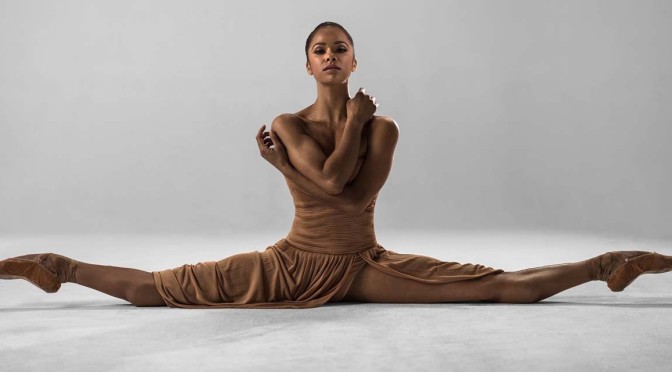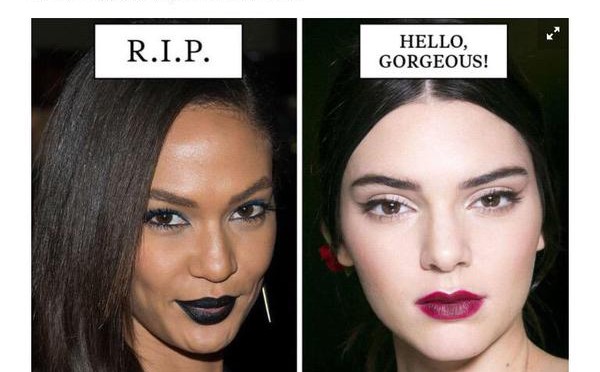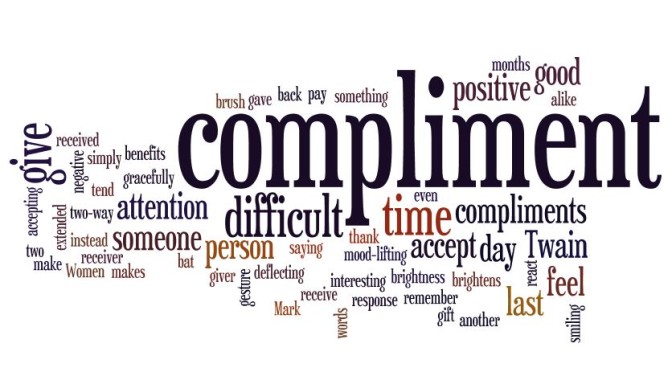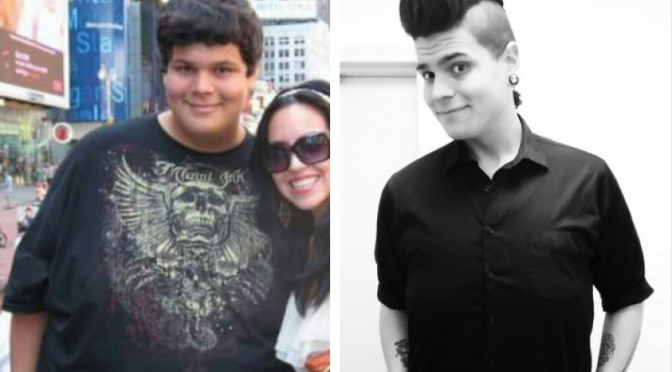By Theresa Ruth Howard
There was an undeniable crackle in the air on the evening of June 12, 2012 at the Metropolitan Opera House. Soloist Misty Copeland was poised to dance her New York City debut in the title role of the Firebird in American Ballet Theater’s decadent new production choreographed by Alexei Ratmansky. The energy of the lobby was charged, but the most notable difference was the overall hue of the theatregoers that particular evening. A cornucopia of sepia-toned people dressed in their Sunday best came from far and wide to support Copeland in this triumph. Professional dancers from all genres were as giddy as the little brown ballet students who had come to glimpse what could be their future. Even those who would normally put out their left eye before sitting through a night at the ballet had come to watch. Though the first half of the program was stellar, we all “endured” it, and the seemingly unending intermission, anxiously awaiting the first chords of Stravinsky’s haunting score and the rising of the curtain revealing the history-making moment.
 It was back in 2009 that Copeland’s star began to shimmer more brightly, with the help of musical genius Prince. He featured her in his Crimson and Clover video and then made her his “muse”, and affluent African-American ABT supporters championed her cause. With newfound visibility and support, Copeland began to gain well-deserved recognition. Two years prior, New York Times writer Gia Kourlas posited a well-formed question in her article entitled Where are all the Black Ballerinas?. The article sparked great debate. Round tables and forums were assembled to discuss the extinction of the species. Copeland was the perfect answer to that very question, because if artistic director Kevin McKenzie were to promote her to the rank of principal, she would be the First African-American female in history to hold that position. There is much talk of “history” making when it comes to Misty, such that Copeland has become herself like a Firebird, a mythical creature, one so rarely glimpsed that it is hard to prove that it even exists.
It was back in 2009 that Copeland’s star began to shimmer more brightly, with the help of musical genius Prince. He featured her in his Crimson and Clover video and then made her his “muse”, and affluent African-American ABT supporters championed her cause. With newfound visibility and support, Copeland began to gain well-deserved recognition. Two years prior, New York Times writer Gia Kourlas posited a well-formed question in her article entitled Where are all the Black Ballerinas?. The article sparked great debate. Round tables and forums were assembled to discuss the extinction of the species. Copeland was the perfect answer to that very question, because if artistic director Kevin McKenzie were to promote her to the rank of principal, she would be the First African-American female in history to hold that position. There is much talk of “history” making when it comes to Misty, such that Copeland has become herself like a Firebird, a mythical creature, one so rarely glimpsed that it is hard to prove that it even exists.
Let us take a moment to deconstruct the construction of “The Myth” itself. The crafting of a myth is a curious thing. The very first ingredient you need to ensure that your myth has a place to bed is the inherent lack of something, a longing, a void that needs so desperately to be filled that people are willing to do or believe anything to fill it. The desperation is so great that they pay little attention to what is filling it, but focus only on the joy that the desire has been sated. With that established, we can now begin. The way to ensure the stability of your myth is to base it in a pinch of truth. It matters little how aqueous it might be; after all, this truth is merely a structure through which a bit of fantasy will be woven, such that you can hardly tell where the original truth begins and the other ends. It is the blurring of borders with material akin to the authentic matter, but with just a bit of shimmer added to distract the viewer from the transition. A proper balance of plausibility and sparkle must be present for a myth to take hold and thrive, just a pinch. It must be just real enough, and just fantastic enough, to be magical. One must be entranced, bewitched. It must feel comfortable and oddly familiar at once, so as not to evoke a questioning of the tale. Hence, it is not just the teller who must be committed. The listener must also agree to suspend disbelief. The two parties are complicit in giving the myth weight, thus anchoring the tale to the ground.
The mythologization of Misty was not born of mendacity. Quite the opposite. By all accounts, its nascent root is somewhat altruistic. What could be the problem with giving little brown girls who want to be ballerinas someone to look up too? Nothing at all, although it is the “oneness” that has become problematic, except that as awareness of Copeland grew (as did her endorsements), others in the field, both present and past, were muffled and then muted, until their existence was being slowly smudged away. It’s true (the grain of truth) that for a long period of time, the presence of the black ballerina has been all but nonexistent. It is important to note that in 2007, when Kourlas wrote the article Where are all the Black Ballerinas?, it had already been 3 years since The Dance Theatre of Harlem had disbanded. Subsequently, the nest that had begotten a great number of ballerinas of color had been effectively swatted from the tree. Those dancers that were left all scattered. Now, due to the inherent racism in the ballet world (I said it, we know it, it’s real, we are big enough to call it for what it is), few of them found ballet companies willing to hire them. Alas, some went to Broadway or to contemporary companies. Many landed at Alvin Ailey American Dance Theater, where you can still see them performing today. Some ventured to Europe. The point is, there were black ballerinas. Dance Theater of Harlem was like a hothouse for them. Dancers of color were drawn to it like sailors to a siren’s song. There was a deep and fecund history of them before Misty was born, and before she became a household name, but you would never know it by the way the narrative is being written. When DTH’s company closed, it was like the Men in Black pushed the pen light. All was forgotten. The truth behind the myth is that Misty is walking on a path that, though overgrown from lack of use, was cleared before her – but you would never know it (unless you know it).
The truth behind the myth is that Misty is walking on a path that, though overgrown from lack of use, was cleared before her, but you would never know it (unless you know it)
The mythologization of Copeland’s story, her journey and the glorification of her achievements (which have been great and many) are not the problem. She deserves the accolades. The issue is that when the narrative assigns Copeland with the title of “only”, and often “first” in many instances, it is inaccurate. Here is where the construction of the myth kicks in. It is inaccurate, either by the omission of those who have come before or by the length of time since the previous nameless person achieved said goal. The effect has been to bury a long line of African American Ballerinas that preceded her. There are many, but seldom are their names and achievements acknowledged when we are talking about African-American females in Ballet. Presently it is all Misty all the time; it is a great PR machine at work. The truth is that Misty may well be the “only” in her time, but the way the narrative is being written today, you would think that she was the first, and the only ever, that she is blazing an unmarked trail, and because she has become the “face” of the “Black ballerina” for this generation, people believe it to be true.
The truth behind the myth is that Misty is walking on a path that, though overgrown from lack of use, was cleared before her, but you would never know it unless you know it. There is a sort of erasure that is taking place. It is quite easy to do, as much of African-American history is written from a revisionist perspective if it is recorded at all. If we as a people do not keep the records, who will? Seldom does white America come into the stacks of our archives (except for one month a year which is designated for a cursory lesson of the vast and far reaching contributions of African-Americans) to learn of our history, which is American history . When it comes to dance history, and ballet specifically, there is even less interest and knowledge of that history. Therefore, it has been both harder to preserve and easier to alter, or eradicate.
Over the past 5 years we have seen the meteoric rise of Misty Copeland, and although her Q rating has gone up, her ranking at the American Ballet Theater has not. Here is where the mythology starts to show some fissures. When Copeland began to gain some support for her singular (and duly deserved) position at ABT, there was a campaign of sorts launched. “Get the word out about this girl! She could do what has never been done, she might be able to be the first African American Female Principal of ABT!” That is the first granule of truth. Copeland was and is still poised to make history if and when promoted. However, when the PR machine got started, Copeland’s Wikipedia page cited her as being the first African-American Female Soloist in the history of ABT. This is untrue. She is in fact the third to hold this ranking (admittedly an abysmally low number overall), having been preceded by Anne Benna Sims in the 1970’s and Nora Kimball in the mid-80s.

Two decades is a long time. Some might say “It might as well be a first.” For almost 2 generations of dancers it is, but in reality it is not. There were two women in the American Ballet Theater who were the “Misty Copeland’s” of their day. In the 70’s or 80’s they were the ones little brown girls went to the ballet to see, their eyes searching frantically for a glimpse of themselves on stage. If you had seen or been inspired by either one of them and their artistry, you would take issue with their omission. I can recall being mesmerized by Nora Kimball, who was like a mythical creature on stage (I saw her dance when she was with the Frankfurt Ballet). She was beauty in motion, but as a woman she was….breathtaking. For me it was Debra Austin, who was a Principal dancer at the Pennsylvania Ballet in the 80’s where she danced roles in Swan Lake, Coppelia, A Midsummer’s Night Dream, Giselle and La Sylphide. As a young student I would watch her in rehearsal, mouth agape.
(*Ms. Copeland’s page has since been amended to reflect that she is in fact the fourth African-American soloist (and third female) at ABT.)

That having been stated, if you were to Wikipedia Anna Benna Sims of Nora Kimball you would be left wanting for information. That might be partly due to the eras in which they danced. We are in an age where every action, both banal and noteworthy, is documented equally. Both women danced in a time where creating video was not as easy as whipping out a cell phone and posting. Back in the day, archiving was an actual job that required a degree, and it was done as a means of preservation, not marketing and self promotion as is typical today. Their stories have not been scanned and uploaded, they might be uninterested, or daunted by the task, and no one else has has done so. Thus like a photograph in time, the images begin to fade, fade, fade away…



Beyond Wilkinson, Copeland and journalists alike have seldom by name, acknowledged those who have actually walked her path, as a result both Sims, Kimball, have been reduced to less than footnote in the history they wrote, and have all but been forgotten except those who witnessed their endeavors.
Let us go back to the evening of Copeland’s Firebird debut, and see how the myth was strengthened, the New York Daily New stated:
“But in June 2012 — when Copeland became the first black ballerina in history to dance the lead in “The Firebird” for a major classical ballet company, composer Igor Stravinsky’s breakthrough work”

It is important for all to understand that this is not an attack on Misty Copeland, she is one of our pioneers, and the greatest one of her time, but I am confronting the narrative being crafted around her, and the mythology that is being evoked.
 Whether or not you want to include Dance Theatre of Harlem in the category of “classical” or not, the fact that their multi-cultured production of The Firebird that spawned not one but many black Firebirds was not acknowledged by journalists is negligent. Firebird, along with Geoffrey Holder’s Dougla, were signature pieces for the company. Stephanie Dabney, Judy Tyrus, Charmaine Hunter, Christina Johnson and Andrea Long (a former member of New York City Ballet for 8 years), were just some of the incredible African-American ballerinas that danced that role, most to critical acclaim. I recall a particular performance at Washington’s Kennedy Center when Charmaine Hunter danced the lead role and received a standing ovation that lasted almost 5 minutes and was suspended in air during the final tableau. I, in my maiden’s costume, was brought to tears by the reception. Is that not worthy of mention?
Whether or not you want to include Dance Theatre of Harlem in the category of “classical” or not, the fact that their multi-cultured production of The Firebird that spawned not one but many black Firebirds was not acknowledged by journalists is negligent. Firebird, along with Geoffrey Holder’s Dougla, were signature pieces for the company. Stephanie Dabney, Judy Tyrus, Charmaine Hunter, Christina Johnson and Andrea Long (a former member of New York City Ballet for 8 years), were just some of the incredible African-American ballerinas that danced that role, most to critical acclaim. I recall a particular performance at Washington’s Kennedy Center when Charmaine Hunter danced the lead role and received a standing ovation that lasted almost 5 minutes and was suspended in air during the final tableau. I, in my maiden’s costume, was brought to tears by the reception. Is that not worthy of mention?

In America, successful African American’s cannot peacefully co-exist, they have to eclipse.

But I digress,
 Virginia Johnson, the current artistic Director of DTH and former principal dancer with the company danced the company’s critically acclaimed production of Giselle. DTH’s Co-founder Karel Shook fought for the production. He said “They will never take us seriously as a classical company if we do not dance a classic”, but he insisted that it make sense for a company that looked like Dance Theatre of Harlem. Thus it was set in the Bayou, a Creole Giselle. Brilliant. It is a travesty that this important part of history is virtually unknown and is almost absent on the internet. You cannot Google it, and sadly even Dance Theatre of Harlem’s Wikipedia page is sorely lacking in information (in fact none of the names of the Firebirds mentioned above are cited). On the topic of searching the internet, here is a fun fact. When one searches Sims or Kimball, often Copeland’s name and image come up but both of their Wikipedia pages are sparse. Have we gone back to our African roots, carrying on our history through word of mouth griotism? We cannot afford that. Our information must be on the highway. We can do better, we must do better.
Virginia Johnson, the current artistic Director of DTH and former principal dancer with the company danced the company’s critically acclaimed production of Giselle. DTH’s Co-founder Karel Shook fought for the production. He said “They will never take us seriously as a classical company if we do not dance a classic”, but he insisted that it make sense for a company that looked like Dance Theatre of Harlem. Thus it was set in the Bayou, a Creole Giselle. Brilliant. It is a travesty that this important part of history is virtually unknown and is almost absent on the internet. You cannot Google it, and sadly even Dance Theatre of Harlem’s Wikipedia page is sorely lacking in information (in fact none of the names of the Firebirds mentioned above are cited). On the topic of searching the internet, here is a fun fact. When one searches Sims or Kimball, often Copeland’s name and image come up but both of their Wikipedia pages are sparse. Have we gone back to our African roots, carrying on our history through word of mouth griotism? We cannot afford that. Our information must be on the highway. We can do better, we must do better.
It is important for all to understand that this is not an attack on Misty Copeland, she is one of our pioneers, and the greatest one of her time. What I am confronting is the narrative being crafted around her, and the mythology that is being evoked, and what is being left out of her narrative, that is a part of our history.
We saw supermodel Naomi Campbell dominate the scene until Tyra Banks was discovered, and instead of there being space for the both of them (like there was for Cindy Crawford, Linda Evangelista, Christy Turlington) the two were pitted against each other. When writer Terry Macmillan burst onto the publishing scene in the 90’s, she was compared to Nobel Prize- and Pulitzer Prize-winning American novelist Toni Morrison (which is like saying that Jackie Collins is like William Faulkner) There were phrases like “Macmillan, the new Morrison” bandied about. Why? The former’s body of work and achievements aren’t wholly eradicated, but since the number of roles and resources for African-American work is so limited, something often has to give. There is an unspoken double standard in this country. Two time Best Actress Oscar winner Bette Davis (1935/1938) has never been eclipsed by two time Best Actress Oscar winner Meryl Streep (1982/2011). They both hold their rightful place in history, and there is room for both of them.
“I never imagined myself as Odette/Odile…I thought even if I became a principal, this part might not be given to me because no one like me had done it before.”
So who is at fault for the lack of information, abundance of misinformation or omission? Is it Misty? Do we hold her responsible for not constantly acknowledging her sisters in ballet? Is it the PR team that has whipped the myth like Frances Underwood of House of Cards? Is it the journalists lack of due diligence? Are they responsible for driving the narrative? Is it the African-American dance community for not taking care of our own historical archives and keeping our legacy alive and vibrant? I charge all of the above. Yes, Misty could make more of an effort to evoke the names of those who came before her, those who are now in the trenches at ballet schools around this county, and stand in front studios every day as flesh and blood examples to brown girls and boys who have a dream of becoming ballet dancers. Their presence says, “Yes you can, because I did”. But I will say that she has done a great deal, she is out there, the poster child for her generation, and there is a great deal of pressure and expectation placed on her head. This is now a global discussion because of her, and the stance she has taken as a Black woman, and getting the message out there.
*It has been brought to my attention that in the Nelson George documentary “A Ballerina’s Tale” at the end there is a mention of Sims, Kimball and even a picture of Anderson in Swan Lake, and an interview with former ABT member Robyn Gardenhire. Better late than never, but one can’t help but wonder if this is is kind of like the amendment to the Wikipedia page…the “Whoops, people are starting to notice, let’s correct that”. Even if it is, we’ll take it!!! It’s a step in the right direction.
What about the journalists? Here is where the hammer comes down. Writers need to do their research (and that means going beyond reading the last 5 articles that were written inaccurately on the subject). If you are not a dance writer (and some of them have fallen short too) then look for the information, make a call, ask a question, don’t be (yes, I’ll say it) lazy and indulgent toward your angle. It’s called due diligence. Dance Magazine can do better with featuring artists of color regularly; those we know, and those we should know (broader than just the 25 to watch). Often we see the same faces being featured over and over again. Tell us something we don’t know, tell us something we SHOULD know.
And lastly to the community, yes we are to blame on a level. If we don’t document, protect and herald our history, who do we think is going to do it? Dance Theatre of Harlem, I charge you to put the names of the beautiful artists that helped build the legacy that you are working to live up to and restore, on your Wikipedia page! Why is it that we can name a slew of white ballerinas – Suzanne Farrell, Natalia Makarova, Melissa Hayden, Sylvie Guillem, Heather Watts, Gelsey Kirkland, Darsi Kistler, Alessandra Ferri, Wendy Whelan, (and one does not negate but informs the other)? You can effectively chart ballet’s evolution by connecting their dots. They are all beautiful and talented and have their individual page in history as they should. Most ballet dancers, black, white or other, would have a hard time naming 5 African-American ballerinas, and it is not because they have not existed, it is because they have not been valued and held up in the same way as their white counterparts. Such is the case in America across the board. #blacklivesmatter, #blackcontributionmatters…. WE HAVE DOTS, in the plural not just one, and we need to post them so that we can connect them and reveal the constellation of our history.
I wrote this not as a slam to a woman of immense talent, courage, strength and beauty. No I wrote this:
Let this be an open “Role” call.
In the comment section below please enter your name or the name/s of black ballerina/s who has danced professionally. Please leave the company affiliation(and rank if you like) and any other information you think is important to remember. Everyone’s contribution is valid, and valuable and worthy to be acknowledged.. This is gonna a be fun!!!
(if this was sent to you via Facebook, or some other link Please leave your entry on the http://mybodymyimage.com comments to keep them together and as public as possible!)
Please leave roll call listing at http://www.museumofblacksinballet.org/rollcall/
fill out the Form and we will have them added!! the Revolution has begun!!!









































